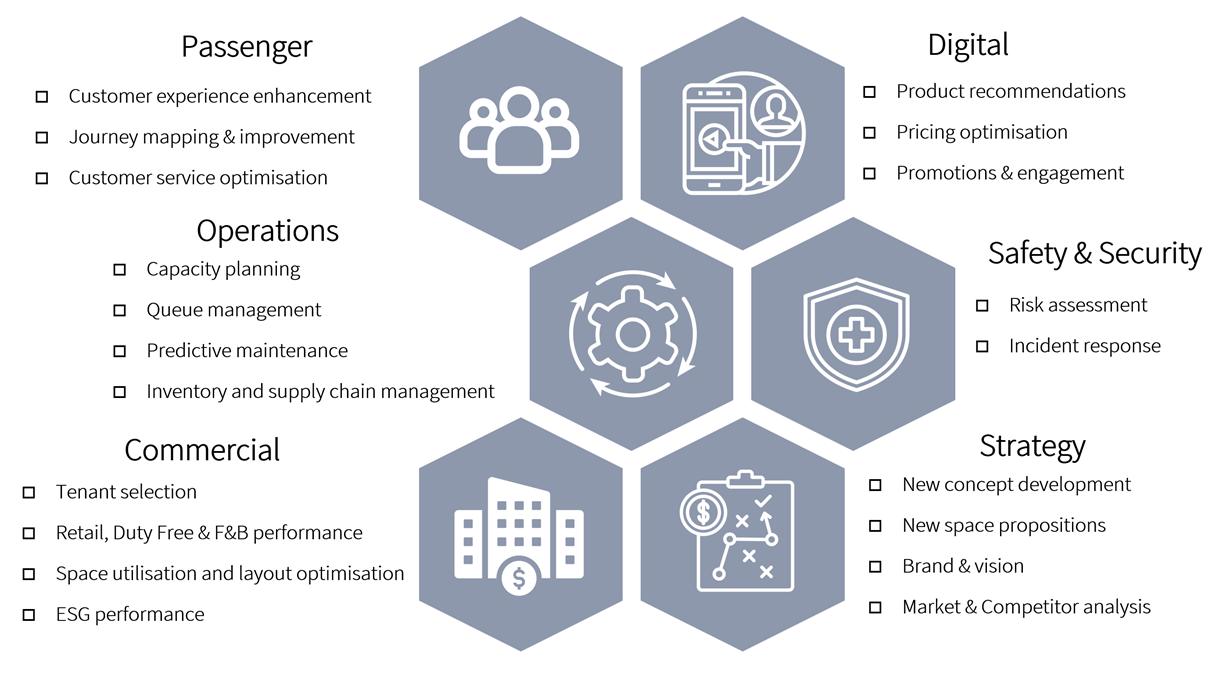Data strategy
In my previous articles on the transformative potential of data, analytics and AI in space planning and commercial real estate, I examined their role in everything from our understanding of consumer behaviour to the design, and operation of spaces. In this article, I look at how you can create a data strategy that works for your asset.
The effective use of data is vital to the future of the sector. Informing decisions and actions about how we, envision new and repurposed spaces, consider feasibility of different uses, optimise those uses, and monitor their environmental, social, and economic performance and impact.
While the possibilities feel endless the harsh reality is that many organisations in our sector are not yet ready to truly tap into this potential. Many at the heart of commercial real estate, be they developers, designers, investors, asset managers, or operators, are struggling to properly harness data and analytics.
The promise of data and AI can feel hollow if you’re wrestling disconnected data sources, copious spreadsheets, questionable data quality, and sub-optimal tools and capabilities. In this scenario, decision-making can feel drawn-out and risky, and everything seems gut feel rather than evidence-led.
This is the reality for many organisations, and not just those in commercial real estate, however certain characteristics of the sector can make data-led decisions problematic. There is a lot of information we need to properly manage spaces, across a host of social, environmental, and economic themes. As well, as high dependency on third party data sources.
However, place and space-making involve many stakeholders, which requires significant collaboration to harness all critical data and generate the holistic knowledge required to achieve a full picture.
Think of an airport for example: an otherwise tightly controlled space, where data is typically disconnected. Airlines may have great information on passengers, retail and duty-free and may have strong insights into shopping behaviours, but many airport operators cannot harness these insights as they are locked in their own ecosystems. Insights that if drawn together could have game changing potential for optimising the airport experience.
Making progress means one thing. Developing a strategic approach to data and analytics is another: achieving absolute clarity of intent for how your organisation needs to harness data going forward, and driving decisions and actions which unlock the valuable outcomes you want to achieve from your spaces.
Being strategic
An asset data strategy is a framework for harnessing data, tailored to space planning, which is fully aligned with organisational objectives, whether they are focused on driving revenue, achieving environmental improvement, or making social impact.
If we look at our airport example again, we know that data is vital for decisions from everything from passenger experience to customer services, to space utilisation and concession performance management. The intelligence offered by data can help airport operators drive greater performance and productivity, deepen consumer insight, manage risk, innovate, and adapt.
In fact, there are many ‘use cases’ for data across the airport ecosystem. All of which require a strategic approach to ensure valuable outcomes.
Developing a data strategy that works for your asset or organisation boils down to answering five big questions:
What do you want from data? (Ensure it aligns with the value you want to create).
What are your use cases for data? (The initiatives you need to unlock that value).
What is your current level of data maturity? (Ensure you have the right capabilities).
What are your priorities going forward? (Focus investment on critical change).
How will you implement change? (Balance quick wins with long-term vision)
While a commitment to improvement and innovation, a data strategy can become a significant source of competitive advantage. According to a study by PwC data-driven companies (in all sectors) outperform their competitors by 6% in profitability and 5% in productivity.
There is enormous potential for the commercial real estate sector to harness data and analytics, however this will require the adoption of a strategic and purposeful approach.
James Miller



